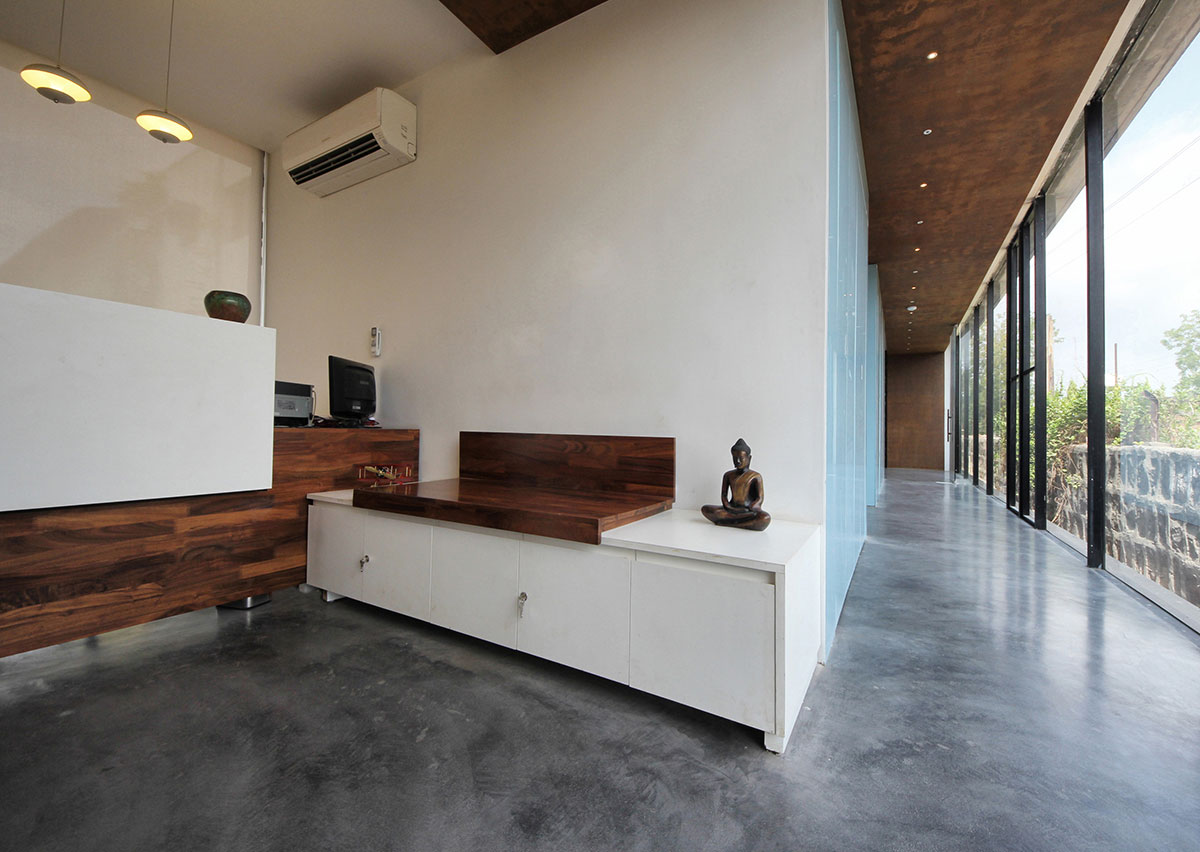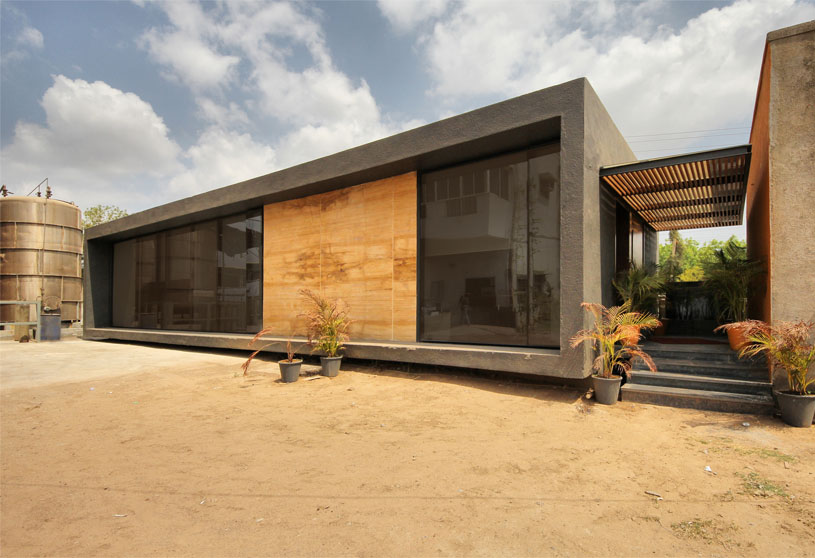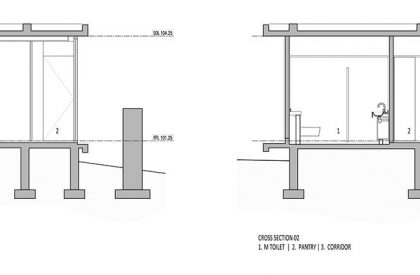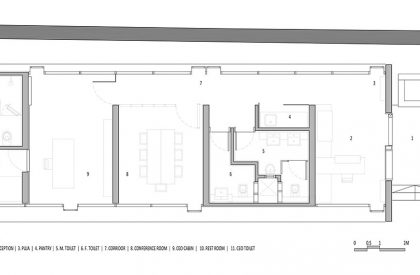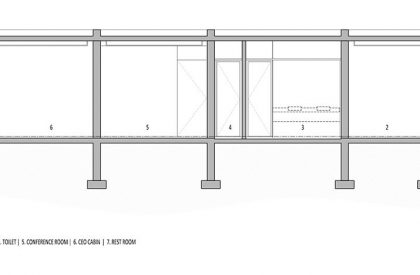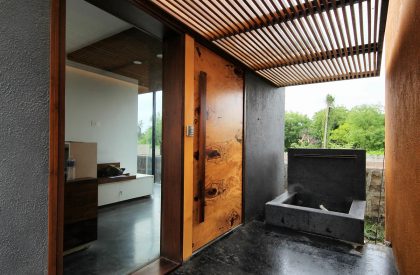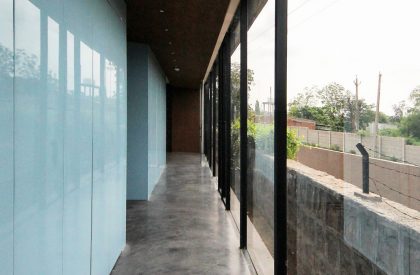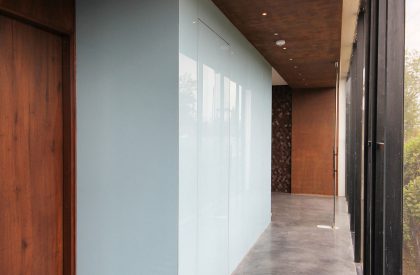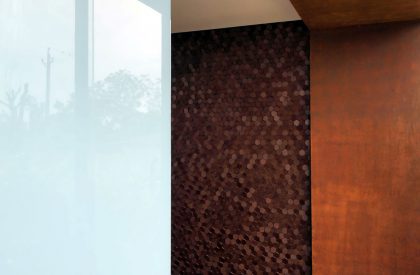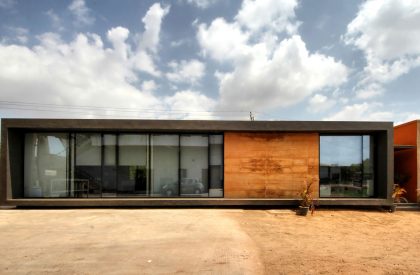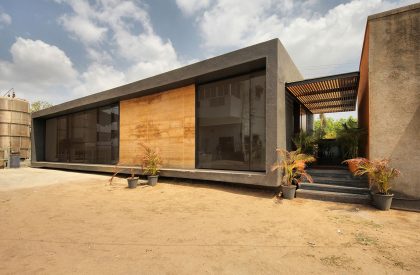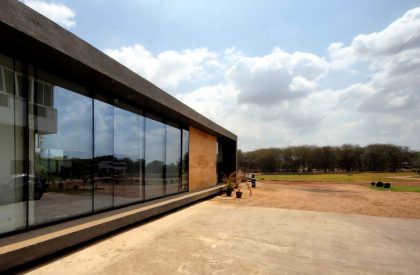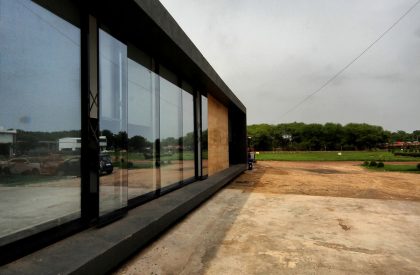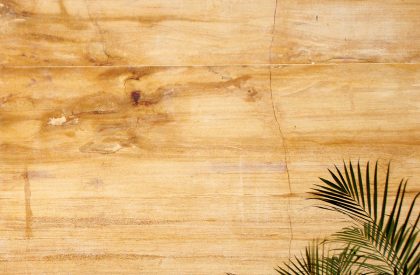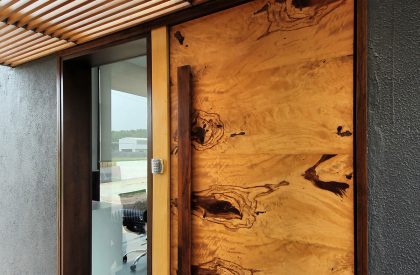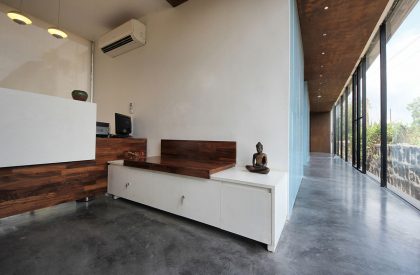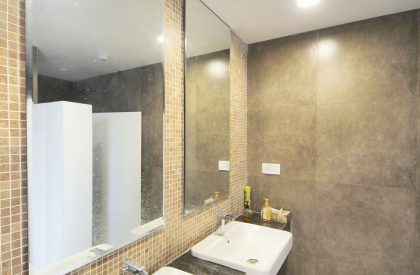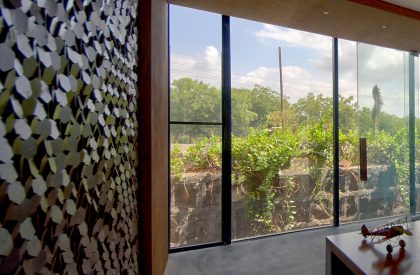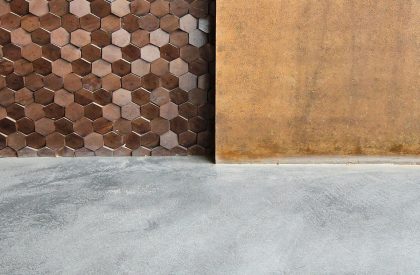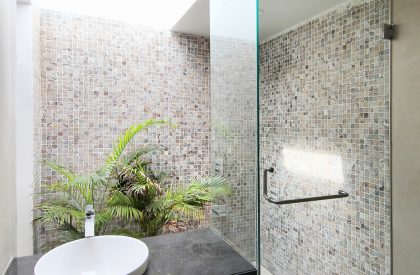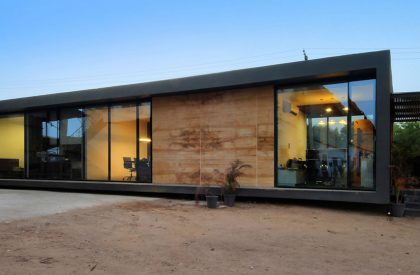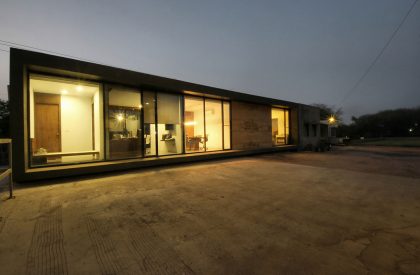Excerpt: Office@Threshold is a commercial space designed by the architectural firm Reasoning Instincts Architecture Studio. The proposed design attempts to represent the client’s aspiration to reach out to the world for his business expansion while marking his presence amongst his competitors. The critical aspect here was to provide high standards of a comfortable work environment to its primary user and his esteemed visitors.
Project Description
[Text as submitted by Architect] Set in the arid industrial context next to a busy state highway, the structure is a small and sole workspace of a young CEO at the threshold of his vast industrial estate. The proposed design attempts to represent the client’s aspiration to reach out to the world for his business expansion while marking his presence amongst his competitors. The critical aspect here was to provide high standards of a comfortable work environment to its primary user and his esteemed visitors.
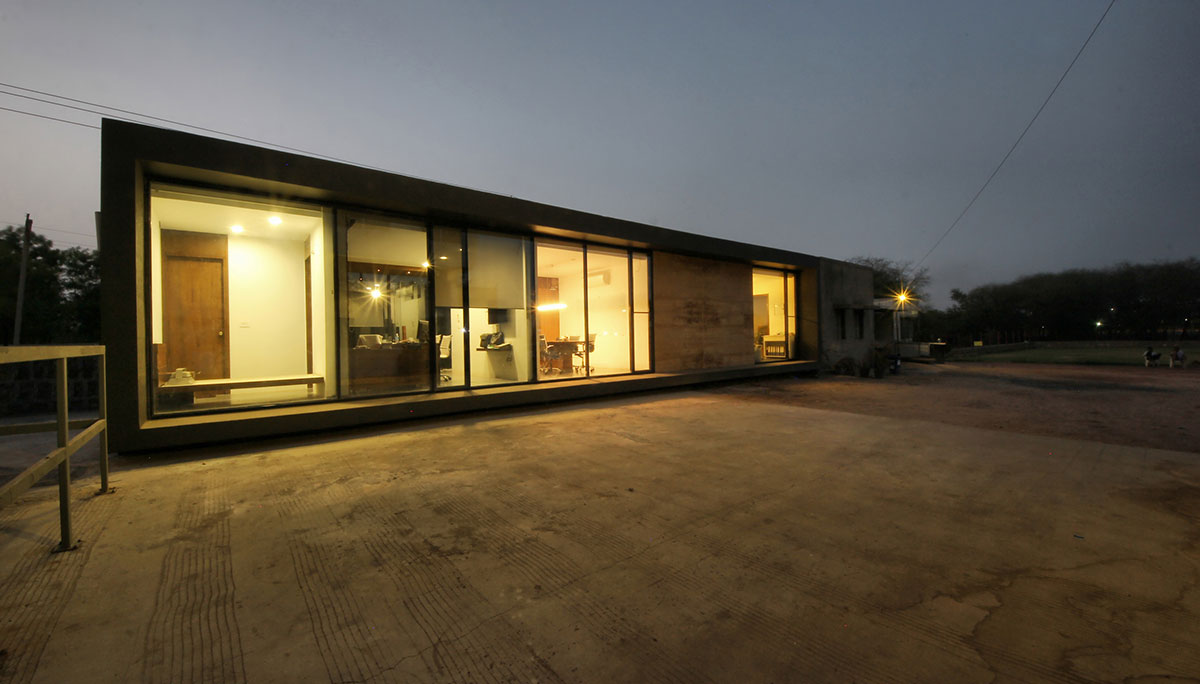
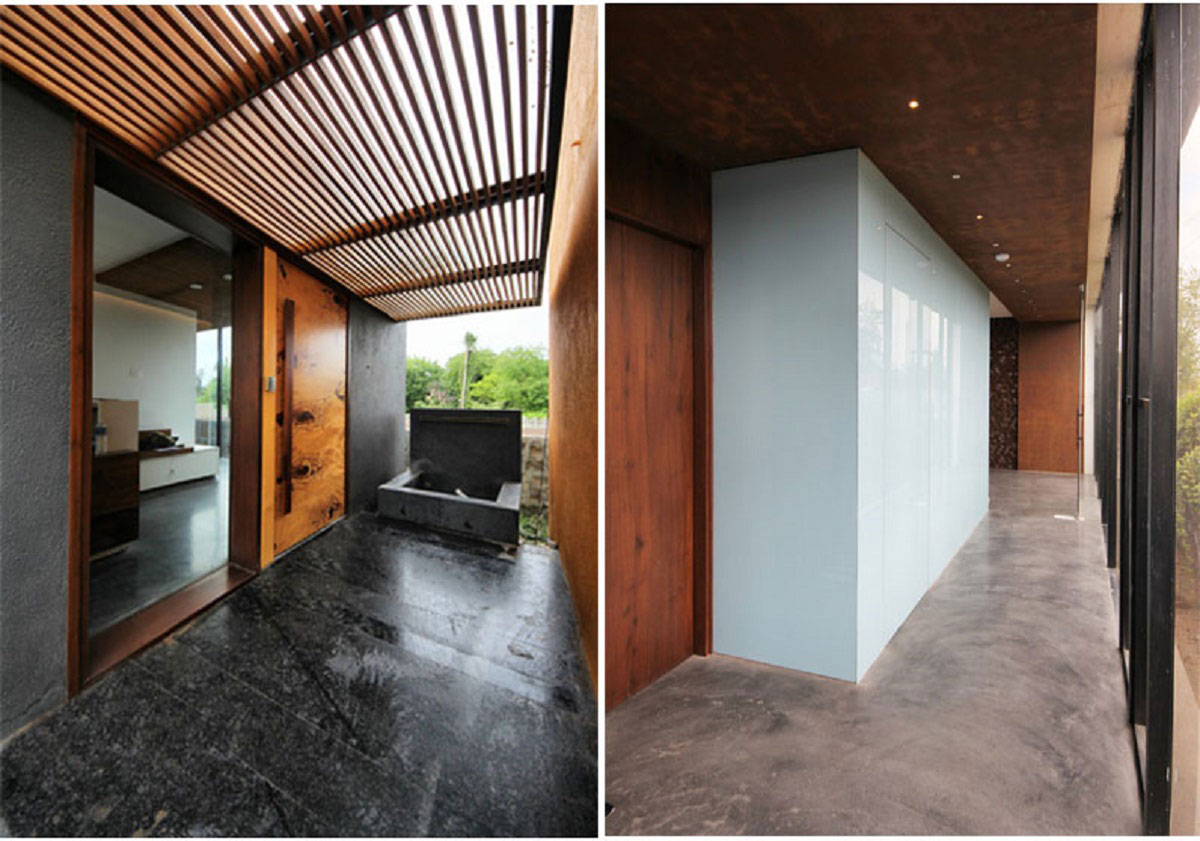
The challenge was responded with a simple unified form floating above the ground housing reception, a conference area, a CEO cabin and a private rest area. The workspace is designed to specifically suit the industrial functionality of the client’s nature of work with visual connectivity to his entire unit at all times. Built with a concrete frame structure, the building is partially cladded with the yellow-coloured local stone – ‘Ita Gold’ to add a sense of vibrancy to the main recessed reflective double-glazed façade. The dark colour on the exteriors and extended floating plinth helped achieve a contemporary urban edge in the overall appearance of the building.
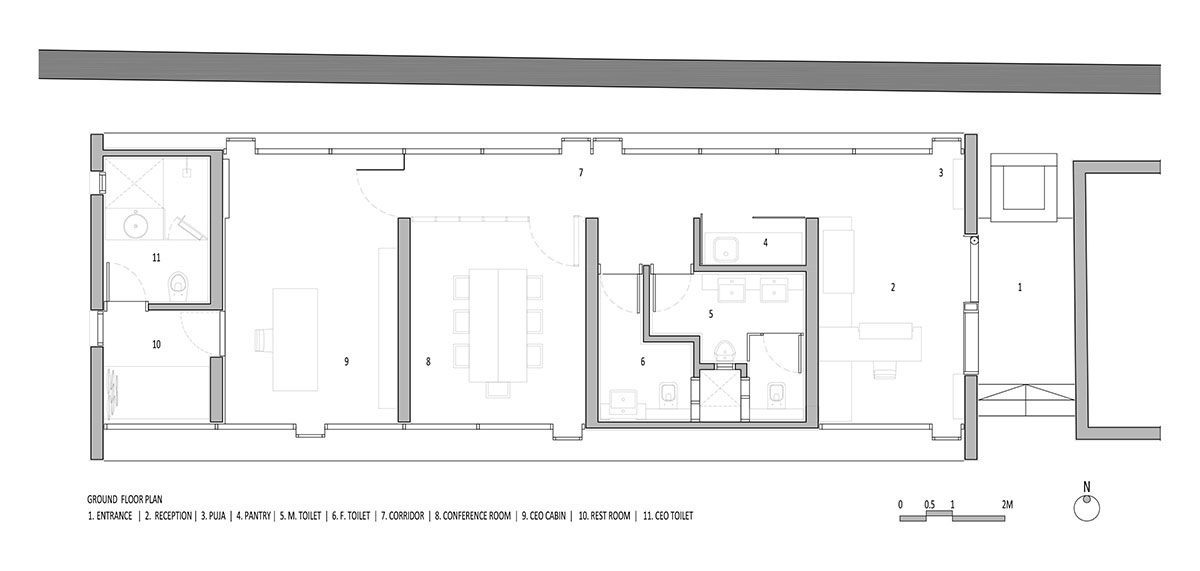
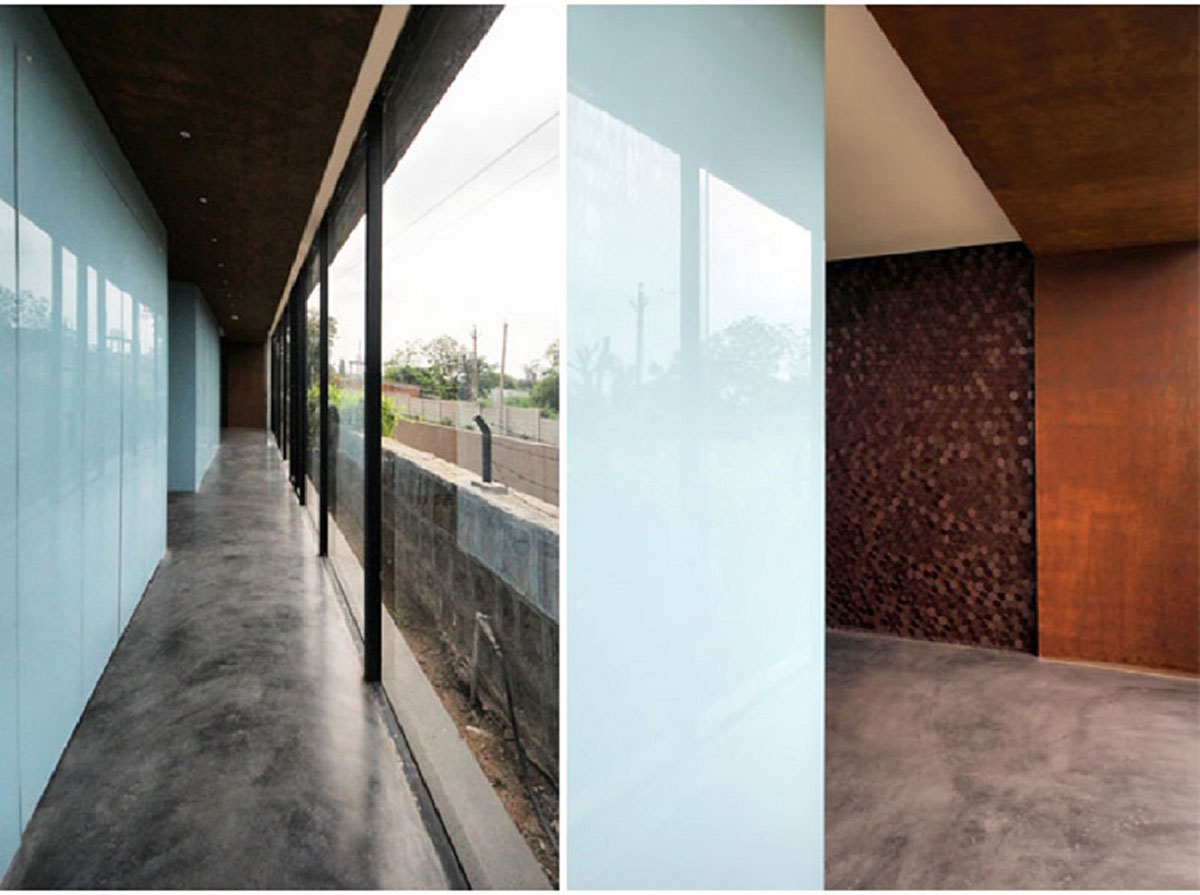
The plan organization driven by ‘Vastu’ (Indian Vedic Science of Buildings) is a linear arrangement of spaces connected by a corridor. The materials used for the interiors are a combination of traditional and contemporary materials. A juxtaposition of contemporary finishes, such as a monolithic concrete MicroTopping Floor, rusty ironic paints, back-painted glass and stainless steel, complement the natural materials, such as a backdrop wall made from Ghanaian Teak, mosaics of Bidasar stone (local stone) and finger-joint wood (remaining timber) used in a background wall and discarded remnant wood as a backdrop wall. It was a great experience to execute the design by working with the different local agencies with limited exposure to contemporary details and finishes.
